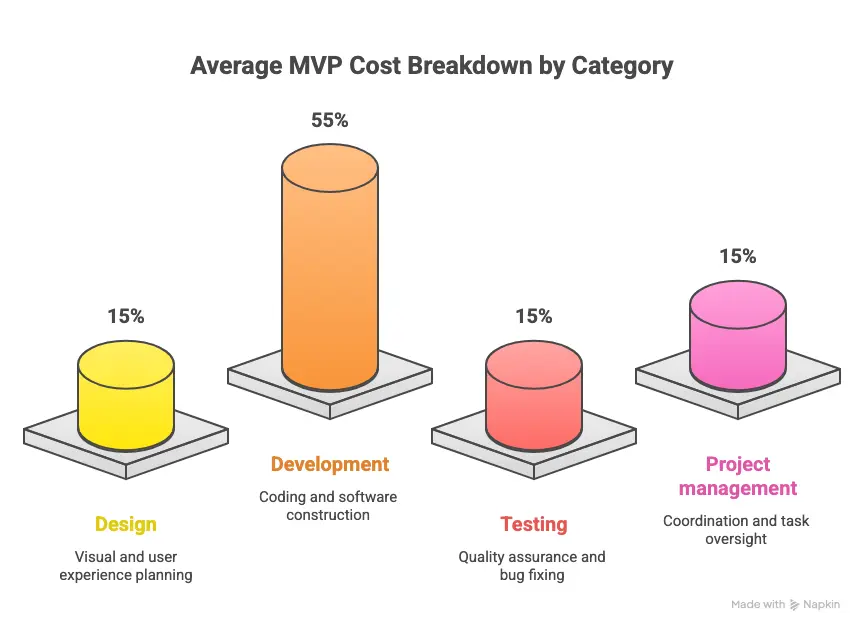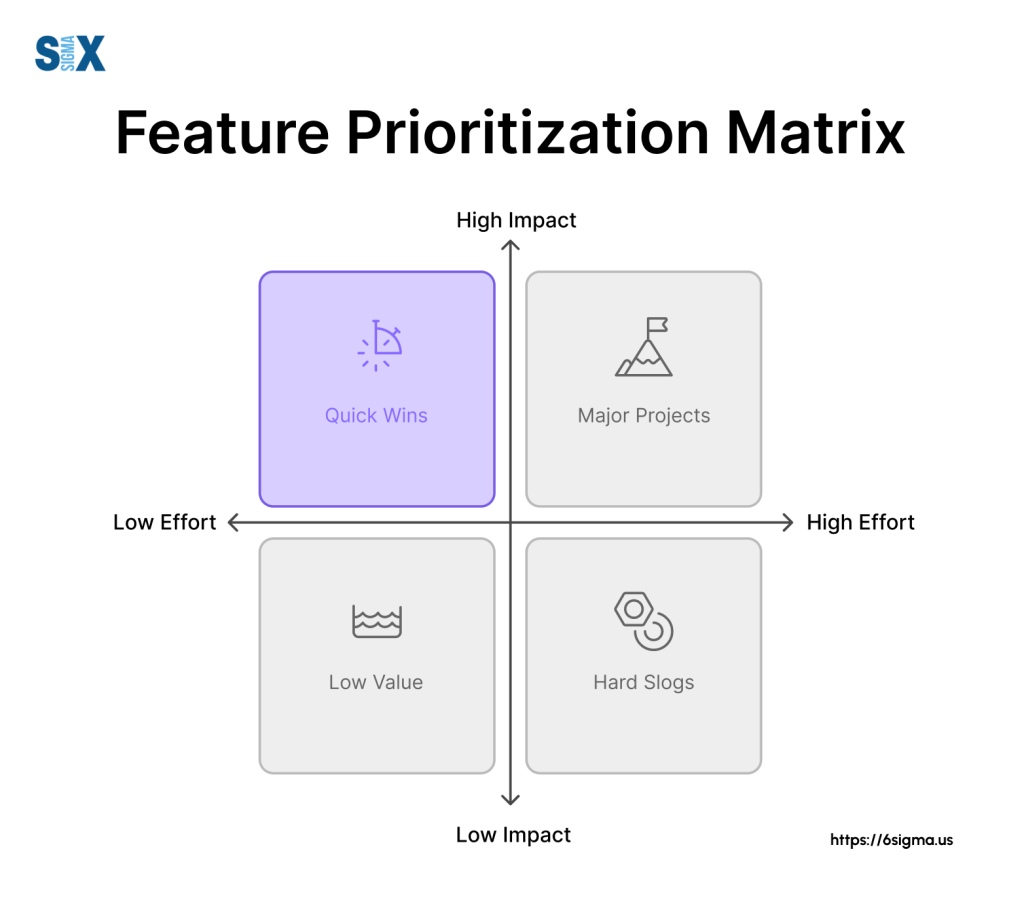SaaS MVP Development: A Complete 2026 Guide for Founders and Product Teams
October 27, 2025 • 12 min read

Building a successful SaaS product rarely starts with a full-feature launch. The smartest founders begin with an MVP, a minimum viable product designed to validate real user demand, reduce risk, and guide smarter investment decisions. Creating an MVP that truly achieves these goals requires more than coding a few features. It is about building a foundation for scalable growth while testing your market fit efficiently.
This guide covers everything you need to know about SaaS MVP development in 2026, from the strategy behind building an MVP to cost benchmarks, technical choices, and post-launch scaling. Whether you are a founder, product manager, or investor, you will find practical frameworks, examples, and insights that go beyond the typical high-level advice found elsewhere.
Key takeaways:
- Learn how to plan, build, and validate a SaaS MVP that reduces risk and accelerates market entry.
- Understand cost ranges, timelines, and team options for different MVP complexities.
- Discover best practices for scaling from MVP to full product.
- See how a fractional CPO can guide your MVP strategy and help avoid costly mistakes.
What is SaaS MVP development
A SaaS MVP (minimum viable product) is a simplified version of your software that focuses on solving one core problem for a specific audience. It is designed to test product-market fit, not to impress with perfection. In SaaS, this means validating whether your subscription-based product provides enough recurring value for users to pay for it.
Many founders confuse MVPs with prototypes or beta versions, but they serve different purposes.
- Prototype: a quick visual or interactive model to test ideas.
- MVP: a working product with essential features to validate market demand.
- Beta: a near-final version for user testing before full release.
| Aspect | Prototype | MVP (Minimum Viable Product) | Full Product |
|---|---|---|---|
| Purpose | Visualize and test ideas quickly | Validate market demand and core value proposition | Deliver complete solution and user experience |
| Complexity | Low – often non-functional or partially interactive | Moderate – includes only essential, functional features | High – includes full feature set, scalability, and integrations |
| Development time | Days to weeks | Weeks to a few months | Several months or longer |
| Target users | Internal teams, early investors, or test groups | Early adopters and first paying customers | Broad market and established customers |
| Feedback goal | Gauge concept appeal and usability | Measure real user engagement and willingness to pay | Optimize retention, growth, and scalability |
| Cost | Minimal | Moderate | High |
| When to use | Before committing to development | When testing product-market fit | After validation, during growth or scale phase |
When to build and when not to build an MVP
Building an MVP makes sense when you have validated the core problem, understand your potential audience, and have evidence of market interest. It is a way to learn fast without committing full-scale resources.
However, an MVP is not always the right choice. In industries like healthcare or finance, where compliance and security are critical, cutting corners can backfire. Similarly, if your idea depends on complex integrations or network effects that only work at scale, an MVP might not provide useful insights.
Before you start, ensure you can clearly define:
- The specific problem your MVP will solve.
- The target users you will test with.
- The success metrics that will guide your next steps.
Steps in SaaS MVP development
1. Market research and validation
Successful SaaS products start with understanding the customer’s pain point, not just building a feature. Conduct interviews, surveys, and competitor analysis to uncover unmet needs. Use frameworks like the Lean Canvas or Value Proposition Canvas to structure your findings and validate assumptions.
2. Feature prioritization
An MVP’s success depends on focusing on what matters most. Apply frameworks like RICE (Reach, Impact, Confidence, Effort) or MoSCoW (Must-have, Should-have, Could-have, Won’t-have) to rank features objectively.
Start with one clear promise, one problem solved better than anyone else. It is better to have a simple MVP that users love than a complex one nobody uses.
3. Choosing the right tech stack
Your tech choices determine how quickly you can build, test, and scale. For MVPs, simplicity wins. Many teams start with monolithic architectures because they are easier to deploy and maintain early on. Later, you can evolve into microservices or serverless structures as your user base grows.
Common SaaS stacks include:
- Backend: Node.js, Python, or Ruby on Rails.
- Frontend: React or Vue.js.
- Hosting: AWS, Google Cloud, or Vercel.
Security and scalability should be part of the conversation from the start, especially for products handling user data or payments.
| Architecture | Description | Pros | Cons | Best suited for |
|---|---|---|---|---|
| Monolith | A single unified codebase where all components (frontend, backend, and database logic) are tightly integrated. | Simple to develop and deploy, lower initial cost, easy to debug early on. | Difficult to scale as the app grows, slower deployments, higher technical debt over time. | Early-stage startups and MVPs needing fast launch and minimal complexity. |
| Microservices | Application split into independent services communicating via APIs. | Scalable and flexible, easier to update or replace individual services, supports large teams. | Complex setup, requires strong DevOps practices, more infrastructure overhead. | Growing SaaS companies with multiple teams or complex products. |
| Serverless | Backend logic runs on cloud-managed functions without dedicated servers. | Highly scalable, pay-per-use, no server maintenance, fast deployment. | Cold starts can slow performance, limited control over infrastructure, vendor lock-in risk. | Products with fluctuating traffic or lightweight backend logic. |
4. Build options and resourcing
You can build your MVP using three main approaches:
- In-house team: full control but higher cost and slower start.
- Outsourced development: faster setup, access to expertise, but requires clear scope.
- Hybrid model: internal strategy with external execution, the most common setup for startups.
A fractional Chief Product Officer (CPO) can provide senior-level guidance without hiring full-time leadership. They help shape your MVP roadmap, prioritize features, and ensure your product vision aligns with business outcomes.
If you are non-technical, this kind of partnership is invaluable. It ensures you do not overbuild or choose tools that will not scale later.
5. Launch and feedback loop
A launch is not the finish line. It is the starting point for learning. Release your MVP to a small user group, measure engagement, and analyze usage patterns. Key metrics to track include:
- Activation rate
- Retention rate
- Feature adoption
- Customer feedback trends
Use tools like Hotjar, Mixpanel, or Amplitude for analytics, and schedule regular feedback interviews to interpret the data qualitatively. The goal is to learn fast, iterate, and move toward product-market fit.
6. Scaling from MVP to full product
Once your MVP gains traction, it is time to plan for scalability. Common challenges at this stage include code refactoring, database optimization, and improving the onboarding flow.
Scale in phases:
- Stabilize what is working.
- Refactor for performance and maintainability.
- Add new modules only after validating demand.
Your team will evolve too, from a few developers and a designer to a structured product team with QA, DevOps, and customer success roles.
How much does SaaS MVP development cost
Costs vary depending on complexity, location, and team structure. A basic MVP may take 2 to 4 months and cost between $25,000 and $60,000 if outsourced. Complex SaaS platforms with integrations or dashboards can exceed $120,000.
Here is a rough benchmark:
- Simple MVP: 2 to 3 core features, 8 to 12 weeks, $25K to $50K.
- Moderate MVP: multi-role access, dashboards, 3 to 5 months, $60K to $90K.
- Complex MVP: heavy backend logic, integrations, 5 to 8 months, $100K to $150K or more.
Costs also depend on region:
- North America: highest hourly rates.
- Eastern Europe: balance of quality and cost.
- Asia and Latin America: lower cost, but requires strong project management.
| Region | Simple MVP (2–3 core features) | Moderate MVP (dashboards, multi-role access) | Complex MVP (integrations, heavy backend logic) | Notes |
|---|---|---|---|---|
| North America (US, Canada) | $40,000-$60,000 | $70,000-$100,000 | $120,000-$180,000+ | Highest rates, strong technical expertise and speed. |
| Western Europe (UK, Germany, France) | $35,000-$55,000 | $60,000-$90,000 | $100,000-$150,000 | High-quality output, but higher cost than global average. |
| Eastern Europe (Poland, Romania, Ukraine) | $25,000-$45,000 | $50,000-$80,000 | $90,000-$130,000 | Excellent balance between cost and quality. |
| Asia (India, Philippines, Vietnam) | $20,000-$40,000 | $40,000-$70,000 | $80,000-$110,000 | Most affordable, but requires strong project oversight. |
| Latin America (Brazil, Argentina, Mexico) | $25,000-$45,000 | $50,000-$75,000 | $90,000-$120,000 | Competitive rates, good timezone alignment with US. |

Common mistakes in SaaS MVP development
Many startups fail not because they built the wrong product but because they built too much of it too soon. Avoid these traps:
- Overbuilding: trying to solve every problem instead of validating one.
- Skipping validation: assuming users will love it without testing.
- Poor prioritization: wasting time on non-core features.
- Ignoring post-launch planning: no roadmap for scaling or user retention.
Treat your MVP as a test, not a final product launch. The goal is to learn, iterate, and evolve quickly.
Real-world example: How a focused MVP led to product-market fit in 3 months
I usually don’t advise early-stage startups. There are many reasons for that, and I made this rule for myself years ago. But last year, two founders approached me with an idea that immediately caught my attention. It was simple, clear, and genuinely valuable, something that just made sense.
Like many young founders, they didn’t understand why an MVP was necessary. “Why not build everything right away?” they asked. It took a few meetings, but eventually, they were convinced.
We began a long process of selecting only the essential features. It wasn’t easy since every feature felt “critical” to them. After a lot of back and forth, we launched with a lean and focused MVP. Within just three months, we saw 30% conversion from trial to paid customers and clear traction in our target market. The product was fully product-led growth (PLG), allowing us to quickly identify what worked and what needed improvement.
From my perspective, an MVP isn’t just a low-cost way to validate a product. It also helps founders sharpen their USP (Unique Selling Proposition) and understand what truly matters to customers.
This case closely mirrors the findings from a research study published on arXiv, which showed that MVPs built with a focus on measurement and rapid iteration tend to achieve faster success. Mixpanel echoed this approach in its article “Chasing and Finding Product-Market Fit”, emphasizing that early tracking of engagement and retention is key to sustainable growth.
Similarly, examples from Curiosum demonstrate that products launched as simple, focused, and measurable MVPs reach stable product-market fit much faster.
Best practices and my expert recommendations
Launching an MVP is not just about speed, it is about building the right foundation for your SaaS product to grow and adapt. The following best practices are drawn from my real-world experience across product, engineering, and growth teams that have taken SaaS products from idea to traction.
Focus on one key outcome
The biggest reason MVPs fail is lack of focus. Many founders try to do too much too early, adding features that do not directly validate their main assumption. Start by identifying the single problem your product must solve to prove market demand. Every feature, design decision, and dollar spent should support that goal.
If your MVP solves one clear pain point extremely well, you have validation that people are willing to pay for a solution. Once that is proven, expansion becomes easier and more strategic.
Keep architecture flexible
Early-stage teams often over-engineer their MVP, thinking it will save time later. In reality, over-optimization slows you down and locks you into technical debt. The best approach is to build for adaptability. Use modular codebases, clear documentation, and scalable frameworks that allow your product to evolve as user feedback shapes the next version.
Choose tools that can grow with you but remain simple enough for quick experimentation. Think “start small, evolve fast.”
Integrate analytics from day one
Without data, you are guessing. Integrating analytics early gives you visibility into how users behave, what they value most, and where they drop off. Use event tracking and funnel analysis to understand product engagement and retention patterns.
Even basic tools like Google Analytics, Mixpanel, or Amplitude can provide actionable insights from the very first users. The sooner you start measuring, the faster you can iterate based on evidence instead of intuition.
Build a feedback culture early
An MVP’s real value comes from what it teaches you. Encourage open communication between your team and your early users. Set up channels for feedback through surveys, support chat, and user interviews. Internally, hold regular product retrospectives to reflect on what you learned and how it changes priorities.
A strong feedback culture keeps the team aligned around learning and improvement rather than perfection. It also ensures customer insights drive product evolution.
Work with experienced product leadership
Even the best teams benefit from external perspective. Partnering with an experienced fractional Chief Product Officer (CPO) can bring clarity, structure, and focus to your MVP strategy. A fractional CPO helps define your product vision, prioritize based on real business outcomes, and avoid classic traps like feature creep or poor roadmap alignment.
They bring frameworks and product discipline that most early teams lack, helping you connect technical execution with long-term strategy. For non-technical founders, this kind of guidance is especially valuable because it bridges the gap between vision and implementation.
By applying these practices, you turn your MVP from a simple test into a scalable product foundation that supports continuous growth.
Why work with a fractional CPO
A fractional Chief Product Officer brings product strategy expertise without the cost of a full-time executive. They help shape your product vision, align it with market needs, and oversee the MVP journey from idea to launch.
With a fractional CPO, you gain:
- Strategic oversight to keep your MVP aligned with business goals.
- Prioritization frameworks that balance ambition with focus.
- Guidance on selecting the right tools, vendors, and team structure.
- Continuous validation to avoid building features that do not convert.
If you are planning to build your SaaS MVP and want expert guidance, book a free strategy call. I help startups validate ideas, prioritize the right features, and launch faster with fewer risks.
Conclusion
A successful SaaS MVP is not just a smaller version of your final product. It is a strategic experiment built to test assumptions, learn from users, and set the stage for scalable growth.
The right process, data-driven decisions, and expert guidance can turn an MVP from a basic prototype into a profitable SaaS business.
If you want to accelerate your journey with confidence, partner with a fractional CPO to design an MVP strategy that fits your goals, market, and budget.
FAQ’s
What does SaaS MVP development mean?
SaaS MVP development is the process of creating a simplified version of a software-as-a-service product that includes only the essential features needed to validate its core idea. The goal is to test the market, collect feedback, and confirm that users find value before investing in full-scale development.
How long does it take to build a SaaS MVP?
The timeline typically ranges from 8 to 16 weeks, depending on the product’s complexity, design requirements, and available resources. A simple MVP with 2 to 3 main features may be ready in two months, while a more advanced product with integrations or dashboards can take four to six months.
How much does SaaS MVP development cost?
On average, building a SaaS MVP costs between $25,000 and $90,000. The total depends on the project’s complexity, tech stack, and team setup. Working with a development partner or a fractional CPO can help you control costs by defining the right scope and avoiding unnecessary features.
What is the difference between an MVP and a prototype?
A prototype is a visual or clickable model used to demonstrate an idea or user flow. An MVP is a functional product that users can interact with in a real environment. Prototypes help test design assumptions, while MVPs validate product-market fit.
Should I use no-code tools for my SaaS MVP?
No-code platforms are great for quick validation when time or budget is limited. However, they can become restrictive once your product scales or requires custom integrations. If you expect long-term growth, plan a migration strategy from no-code to a custom architecture early in your roadmap.

Sivan Kadosh is a veteran Chief Product Officer (CPO) and CEO with a distinguished 18-year career in the tech industry. His expertise lies in driving product strategy from vision to execution, having launched multiple industry-disrupting SaaS platforms that have generated hundreds of millions in revenue. Complementing his product leadership, Sivan’s experience as a CEO involved leading companies of up to 300 employees, navigating post-acquisition transitions, and consistently achieving key business goals. He now shares his dual expertise in product and business leadership to help SaaS companies scale effectively.
